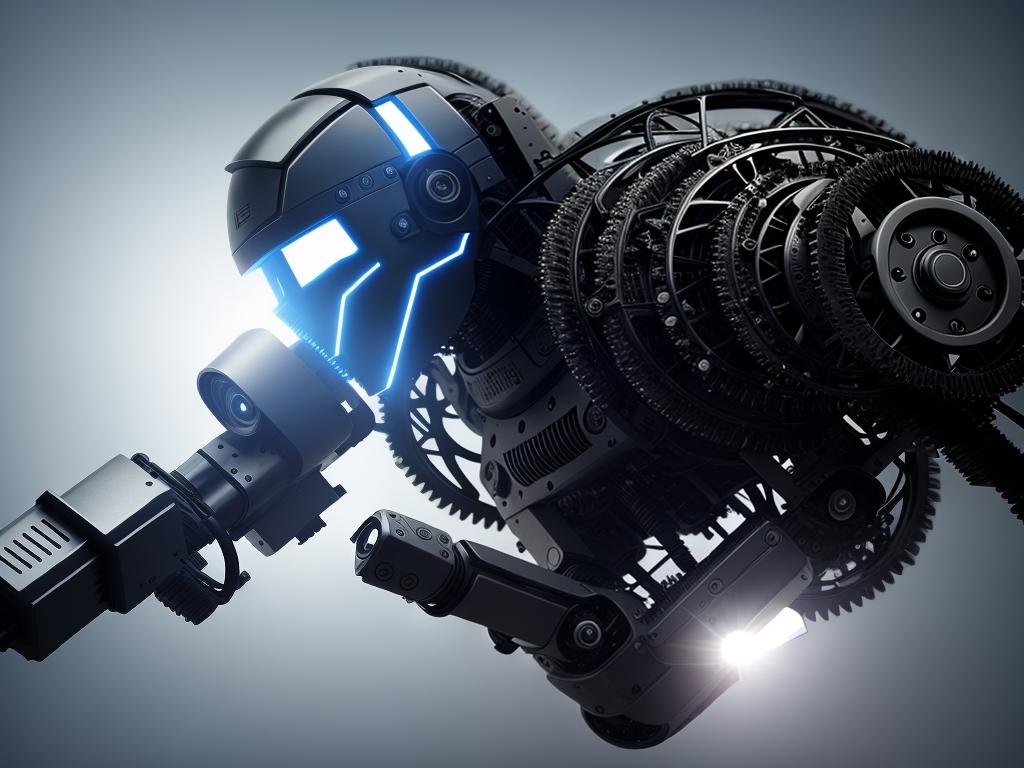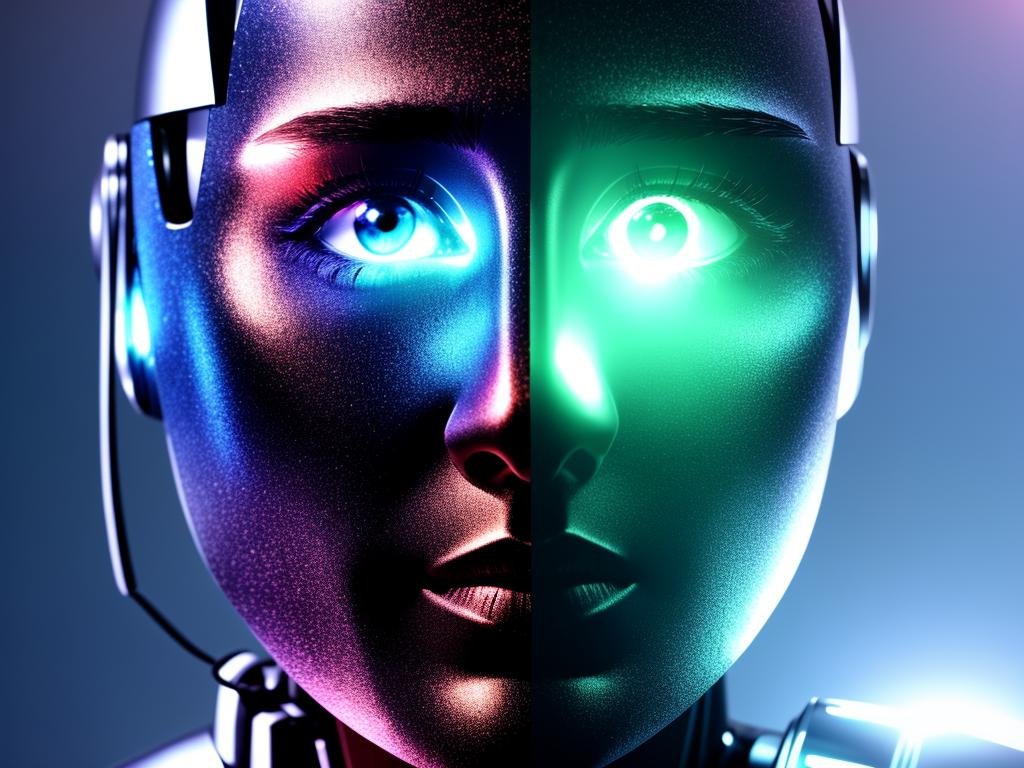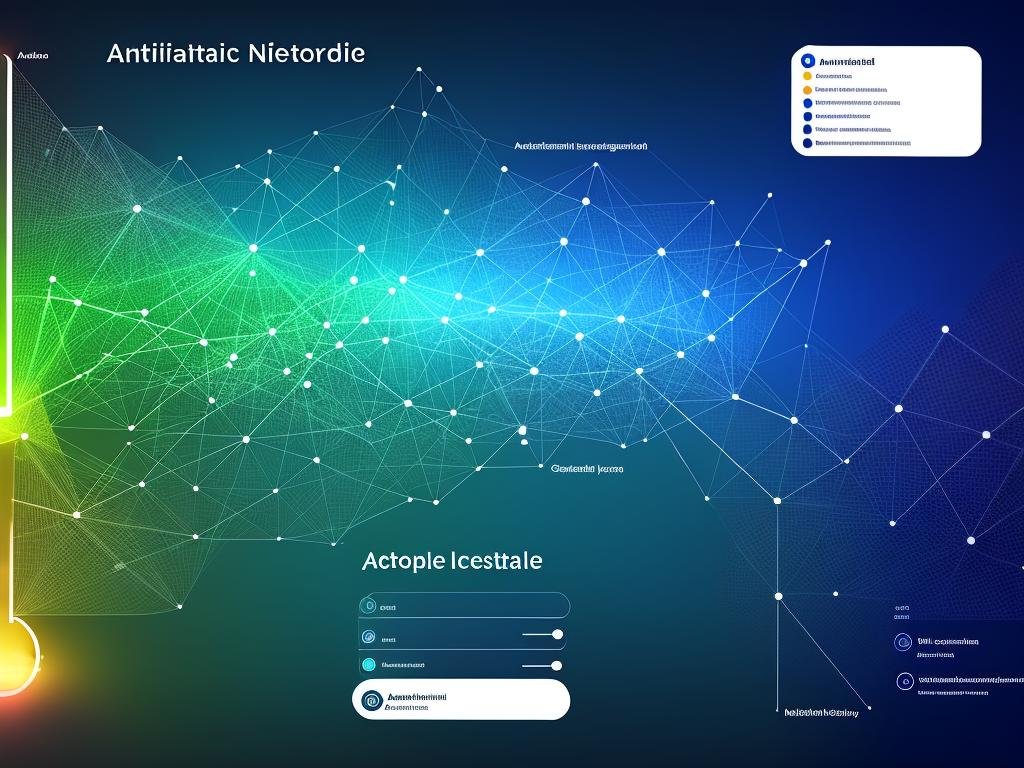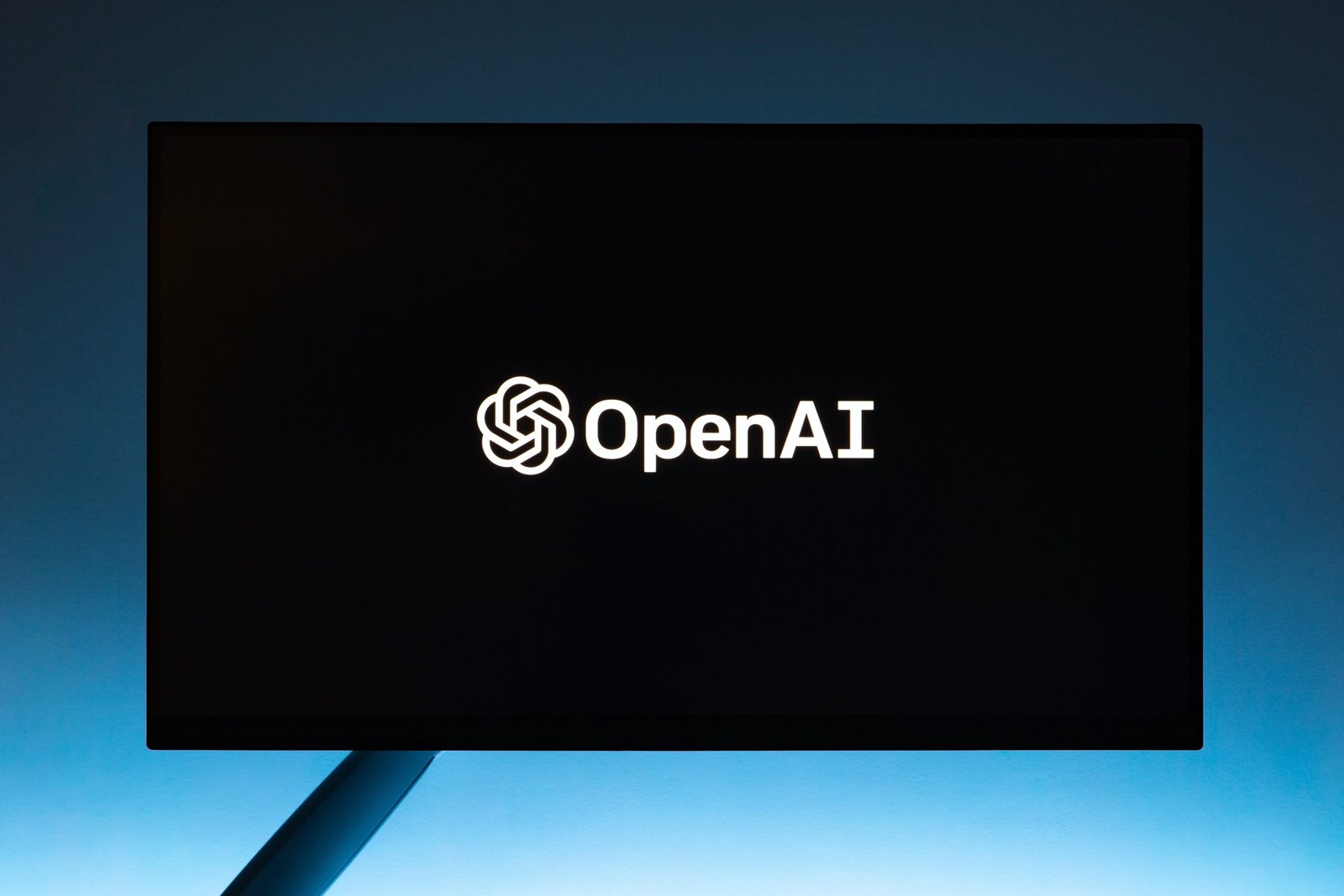In an age where technology shapes and redefines virtually every facet of our lives, Artificial Intelligence (AI) stands as an epitome of innovation that has immense potential to revolutionize the world. The magic of AI, often veiled behind complex technicalities, is steadily permeating industries and everyday life, perfecting the art of replicating human intelligence. This essay elucidates on the basic premise of AI, its different forms, wide-ranging applications, and how it influences society on a macro and micro level. Furthermore, it also provides an intriguing speculation about the exciting yet uncertain future of AI – complete with its promising advancements and daunting ethical dilemmas.
Understanding AI Basics
Basics of AI: An Innovative Concept Cataloged in History
Artificial Intelligence, popularly known as AI, is a field of computer science that continually accomplishes the seemingly impossible. Its inception trails back to the mid-20th century when the foundations for large-scale electronic computing technologies were being created.
Coined in 1956 by John McCarthy at the Dartmouth Conference, the term “Artificial Intelligence” began to allude to machines emulating human intelligence. This concept, however, isn’t about creating a new form of consciousness but rather creating systems that can perform tasks which usually require human intelligence. These tasks include language understanding, object identification, problem-solving, learning, planning, and more.
AI, since its origin, has undergone periods of intense research activity, followed by periods of reduced interest – coined “AI winters.” Despite these fluctuations, progress has continued, and AI remains at the forefront of technological advancement today.
AI’s Components: The Agents and Their Actions
Artificial Intelligence has several components, each playing a vital role in its functionality. To comprehend AI, one must understand its components and their interplay.
Data: The Core of Learning
AI learns from data. Machines are trained using both structured and unstructured data to detect patterns, trends, and insights. AI uses this “knowledge” to learn, make predictions or decisions without being explicitly programmed to perform the task.
Algorithms: The Rules of the Game
Algorithms are a set of rules that an AI uses to achieve a certain goal. Depending on the type of problem at hand, different types of algorithms are used, including machine learning algorithms for making decisions or predictions, evolutionary algorithms for generating high-quality solutions to optimization and search problems, and neural networks for processing complex data inputs.
Machine Learning: The Ability to Grow
Machine Learning is one of AI’s vital components. It involves using algorithms to parse data, learn from it, and then make determinations or predictions autonomously. This self-teaching ability of AI has been monumental in advancing the field.
Neural Networks: The Human-like Processors
Neural Networks, inspired by our brain’s biological neural networks, play a significant role in AI systems. They consist of layers of nodes, mirroring neurons in the human brain, and are used to process and transmit data within an AI system. Deep Learning, a subset of machine learning, employs complex neural networks to create sophisticated models that can deal with intricate tasks including image recognition, natural language processing, and more.
Unfolding the Impact of AI Across Various Domains
Artificial Intelligence (AI) has infiltrated a wide array of industries, acting as a game-changer in each. Whether it’s healthcare, where it aids in predictive diagnostics and personalized treatment regimens, or finance, where it sniffs out fraudulent activities or manages portfolios; AI proves its worth. From self-driving cars streamlining transportation to precision farming revolutionizing agriculture, AI has demonstrated its versatility and adaptability.
In retrospect, it is challenging to identify an arena untouched by AI’s magic touch. At the heart of AI are component elements working in tandem to spawn unique AI types – Narrow AI, tailored to focus on a specific task, and General AI, theoretically equipped to undertake any intellectual task that a human can perform. This highlights the potential reach and breadth of AI applications.
The bottom line, AI is not a figment from an 80’s dystopian novel; it’s reality in evolution. As something that is already redefining how we live our lives, comprehending its nuances is critical in this age of digital ubiquity.

Different Forms of AI
Digging Deeper into AI: Grasping the Complexity of Artificial Intelligence
Artificial Intelligence (AI) is an intricate field with a gamut of subdisciplines comprising of Machine Learning, Deep Learning, Neural Networks, among others. Through the power of algorithms and computational models, AI seeks to ape human-like intelligence, streamline repetitive tasks and tackle sophisticated problems head-on.
Machine Learning: The Basis of AI
Machine Learning, often considered as the backbone of AI, is the scientific study of algorithms and statistical models that systems use to perform specific tasks efficiently without the need for explicit programming. It’s used in data analysis, where algorithms are used to analyze, interpret and learn from large sets of data.
For instance, Machine Learning is used in recommendation systems. Companies like Amazon and Netflix use these systems to suggest products or movies based on your past behavior or the behavior of similar users. Machine Learning is also used in healthcare for disease prediction and diagnosis, as well as in finance for fraud detection.
Deep Learning: AI’s Cutting-Edge Frontier
Deep Learning is a subset of Machine Learning and is one of the most promising branches of AI. It uses artificial neural networks with several layers (hence, “deep”) to simulate human decision-making. Deep Learning systems process data in complex ways by creating patterns used in decision making.
Unlike regular Machine Learning models, Deep Learning systems can learn on their own using a technique called backpropagation. This means they can improve their accuracy over time. Deep Learning powers some of the most exciting applications of AI, such as self-driving cars, chatbots, and voice assistants like Siri and Alexa.
Neural Networks: Emulating the Human Brain
Neural Networks are the backbone of Deep Learning. They are designed to recognize patterns and interpret sensory data through machine perception. Mirroring the structure of the human brain, Neural Networks contain nodes (neurons) that transmit and process data.
These networks are used in every industry where pattern recognition is essential. For instance, in healthcare, Neural Networks can identify cancer cells. In finance, they help to detect credit card fraud. In technology, they power facial recognition software, and in automotive, they are the backbone for self-driving cars.
Artificial Intelligence (AI), with its various facets like Machine Learning, Deep Learning, and Neural Networks, holds substantial importance across varied sectors and industries. Its vast potential manifests in autonomous vehicles through Deep Learning, personalised experiences via Machine Learning, and enhanced pattern recognition that’s powered by Neural Networks. The ongoing advancements in AI technology promise future breakthroughs which will influence our daily lives and the entire global economy remarkably.

Various Applications of AI
The Progressive Tech Landscape: Artificial Intelligence (AI)
Artificial Intelligence (AI) is positioned as a game-changing technology that’s transforming the dynamics of numerous industries rapidly. With its cutting-edge machine learning and deep learning methodologies, AI can independently make decisions and learn from data. It has capabilities to execute tasks which were previously believed to necessitate human intellect.
AI in Healthcare: A Leap Into The Future
One critical sector revolutionized by AI is healthcare. AI applications in healthcare include early disease detection, patient-care, drug discovery, and personalized medicine. For instance, AI algorithms can analyze vast amounts of genomic data to predict an individual’s susceptibility to specific diseases. These predictive models support personalized preventative plans, ensuring well-rounded health management.
AI-powered robotics are also making surgical procedures safer and more accurate. Take the Da Vinci surgical system – it utilizes AI to perform minimally invasive surgery with an extraordinary level of precision, leading to quicker patient recovery times and reduced hospital stays.
AI in Automotive Industry: The Rise Of Autonomous Vehicles
AI’s transformative power extends to the automotive industry, where it’s enabling the rise of autonomous vehicles. In self-driving vehicles, AI algorithms perform real-time traffic data analysis, object detection, and decision making – tasks once solely entrusted to human drivers.
Tesla’s self-driving cars are a notable example. They use AI to detect surrounding objects, predict their movements, and perform actions like accelerating, steering, and braking. This greatly reduces the possibility of human error, leading to safer roads.
AI in the Retail Sector: Personalizing Shopping Experiences
In the retail sector, AI is almost ubiquitous. AI-powered chatbots are now a common feature in online shopping platforms, assisting customers with inquiries and recommendations. AI also fuels recommendation engines that analyze each customer’s past purchases and browsing behavior to suggest products they may be interested in. Amazon’s recommendation system is a prominent example of AI’s contribution to individualized customer experiences.
AI in Finance: Enhancing Risk Assessment And Fraud Detection
For the finance industry, AI has been a game-changer. AI models can analyze historical data to predict market trends and inform investment decisions, and they’re essential for credit scoring and risk assessment. Many banking institutions utilize AI to detect fraudulent transactions in real-time, a task that would normally require enormous human labor.
Artificial Intelligence, commonly referred to as AI, ushers in transformative opportunities in an array of sectors, whether it’s healthcare, education, or large-scale industries. It achieves this by driving efficiency, fostering innovation, and improving accuracy within these fields. The cornerstone of such progress is data. Massive amounts of data generated in various sectors serve as the lifeblood for AI, ensuring its continuous growth and development. Understanding AI and its numerous applications is essential for everyone, including the general public, to stay updated regarding the ever-evolving technological landscape.

The Impact of AI on Society
Understanding the Effect of AI on Society
The rise of artificial intelligence (AI) is not only confined to technological advancements and business efficiency. Its impact extends to society at large, offering both commendable assets and significant challenges.
The gains from AI technologies are evident in numerous areas of life. Through its applications, manual errors have reduced and decision-making processes improved. AI has provided tremendous support in sectors like healthcare with its capacity for aiding diagnostics, assisting surgeries, and managing patient data. Even the education sector has seen bespoke learning experiences for students courtesy of AI’s interventions.
However, it’s crucial to acknowledge the potential drawbacks of this burgeoning technology. AI-induced automation carries the potential for job losses, particularly in routine and low-skill sectors. This could lead to deepening socioeconomic disparities if proper mitigation strategies are not put in place such as revised educational systems and supportive policies. Undeniably, AI also poses concerns over privacy and security, with businesses handling vast amounts of personal data and the risk of AI technologies being exploited for cybercrime efforts.
Economic Impact of AI
AI has the potential to fuel economic growth by contributing to productivity. It can take over routine tasks and assist in complex decision-making, thus freeing up human time for higher-value work. However, this growth won’t be spread evenly and might exacerbate income inequality. While successful AI enterprises and their workers will reap a large share of the benefits, others will face job displacement and wage stagnation.
AI and Jobs
AI is reshuffling the labor market. Many jobs that involve routine tasks are susceptible to automation. On the other hand, AI can also create new jobs that didn’t exist before, like AI ethicists, machine learning engineers, and data scientists. There are concerns that job losses, especially among low-skilled workers, could lead to social unrest. Therefore, it’s essential to design policies and provide education and training to equip workers for the changing job market.
AI in Everyday Life
AI has become an integral part of everyday life. Algorithms recommend what movies to watch, guide how to commute, and even assist in making purchasing decisions. While AI can make life more convenient, it can also result in dependence on technology and raise concerns about digital addiction.
Ethical Considerations in AI
High-profile mishaps involving AI systems have raised concerns about ethics. Data used to train AI could contain biased information, which would then lead the AI to make unfair decisions. Without adequate measures, AI systems could amplify existing societal biases rather than reduce them.
Another ethical issue is consent in data collection. How should companies and governments respect individuals’ privacy rights on one hand and harness AI’s social and economic benefits on the other?
These moral dilemmas require careful consideration involving stakeholders from government, industry, academia, and civil society.
Final Thoughts
Artificial Intelligence (AI) presents us with a wealth of advantages, yet it’s not devoid of its own set of challenges. It’s crucial for us, as a society, to fully grasp these impacts to better manoeuvre this intricate landscape. The responsibility of guiding the creation and utilization of AI technology falls upon policy makers, educators, and industry leaders. The goal is to ensure extensive dispersion of its benefits and the reduction of potential risks.

AI and the Future
The Horizon of AI: Peering into the Coming Future
The field of Artificial Intelligence has experienced a speedy evolution over recent years and shows no signs of slowing down. The noticeable strides in AI technology have left their mark on every sector, from healthcare to automotive, by introducing innovative methods of performing tasks, streamlining processes, and enhancing decision-making processes.
Despite the already striking applications of AI in the present day, the future promises even more astounding possibilities. We’re at the edge of experiencing significant transformation in various facets of our society and economy due to AI. These transformations are bound to change our lifestyle and work methods in ways we might not yet fully comprehend.
Potential Advancements in AI
As we move ahead into the future, AI is likely to become more sophisticated and versatile. Future AI technologies may be capable of understanding human emotions and intentions better, which could aid in developing highly interactive and personalized user experiences.
Continued advancements in quantum computing could enhance AI’s computational abilities massively. This would enable AI to solve complex problems in seconds, improving efficiencies, and productivity across various sectors.
Moreover, future AI systems are predicted to become more autonomous. This could see AI take over complex tasks such as driving, flying airplanes, performing surgeries, and even fighting wars.
How AI Might Change our World
In the future, AI capabilities could become an integral part of our daily lives. We may see AI personal assistants becoming common, helping individuals manage their schedules, medication, house maintenance and a multitude of other tasks.
AI robots could become an essential part of our workforce, especially in industries such as manufacturing, logistics, and healthcare where they could perform demanding and dangerous tasks that humans would rather avoid.
In the healthcare sector, AI could revolutionize medicine by improving disease diagnosis and surveillance, drug development, and individualized treatment plans. AI could also help in managing and preventing chronic diseases, potentially increasing our lifespan and quality of life.
In education, AI-assisted learning could provide personalized learning experiences to students, helping them grasp concepts more effectively and rapidly.
Experts’ Predictions on AI’s Evolution
Experts in the field of AI have varied predictions regarding its future evolution. Some believe that AI will continue to improve and work alongside humans, complementing human intelligence and ability. Others warn about the potential risks of AI as it becomes more autonomous and difficult to control.
AI experts such as Elon Musk have expressed concerns about AI’s potential to exceed human intelligence, fearing it could pose significant risks to humanity if not adequately regulated.
On the other hand, experts like Sundar Pichai foresee a more optimistic AI future. Pichai envisions AI as an essential tool to solve complex global problems like climate change and disease outbreaks. He believes in the need for a robust regulatory framework to ensure that AI’s development is ethical and serves humanity.
Clearly, while AI has the potential to bring about significant improvements in various fields, managing and mitigating its associated risks are necessary for a successful AI-enabled future. As we progress further into the future, it is of utmost importance that we approach AI developments mindfully, balancing the desire for innovation with the need for safety and ethical considerations.

Photo by peterlaster on Unsplash
The grand narrative of AI does not end here, but rather, it continues to unfold each day with new advancements and applications. The impacts of AI on society and economy are as profound as they are extensive, triggering a gamut of responses – from awe and admiration to fear and apprehension. As we stand at the upfront of this AI-driven era, it’s pertinent to leverage its potential diligently while consciously dealing with its challenges. As we continue our journey towards understanding and embracing AI, the basic tenet remains the same – AI, with its vast capabilities, is not just a testament to human intellectual prowess, but a tool to augment our lives and create a better future.


